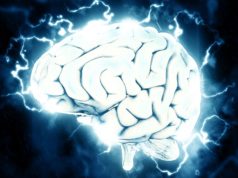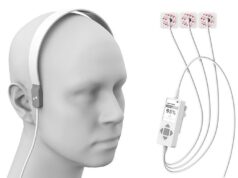Therapy in which robots manipulate paralysed arms, combined with standard rehabilitation, can improve arm and shoulder mobility in patients after stroke, according to research presented at the American Stroke Association’s International Stroke Conference 2011.
“Combining robotic exercise with regular rehabilitation may be the key to successful intervention,” said Kayoko Takahashi, lead author of the study, clinician and research associate in the Department of Occupational Therapy in Kitasato University East Hospital, Kanagawa, Japan. Robots could allow therapists to focus on helping patients master daily activities while maintaining repetitive training, Takahashi said.
Patients on robotic therapy showed marked improvement in two measures of upper extremity function: the Fugl-Meyer flexor synergy score, a 0 to 12 scale with higher numbers reflecting recovery of voluntary arm movement; and the Fugl-Meyer shoulder/elbow/forearm score, a 0 to 36 scale with higher numbers reflecting recovery of motor function in the shoulder, elbow and forearm.
The new study involved 60 stroke survivors with hemiplegia treated at six rehabilitation centres in Japan. The patients, average age 65, had suffered a stroke in the previous four to eight weeks. All received standard rehabilitation therapy from an occupational therapist.
Half the group received robotic therapy every day for six weeks, in sessions lasting 40 minutes. The other half spent the same amount of time working through a standard self-training programme for hemiplegic patients, performing stretches and passive-to-active exercises of their affected arm.
With a recent trend in helping patients function with one arm, “many post-stroke patients have given up hope of recovery of their affected arms.” Takahashi said. “Participating in such robotic exercise is therefore expected to give patients insights about their future ability and a more positive image regarding their affected arm, increasing their self-efficacy and motivation toward rehabilitation.”
The group assigned to robotic therapy used a Reo Therapy System by Motorika Ltd. in Israel. For the therapy, the patient’s forearm, either resting on or strapped to a platform, is moved in multiple directions based on pre-programmed exercise movements.
The successful test of robots adds a new wrinkle to stroke rehabilitation strategies, Takahashi said. While repetitive movement is an essential therapy, physical and occupational therapists are not always available to provide care, and self-training, if not done correctly, can result in pain and disability.“Robots, on the other hand, can carry out the repetitive movement exercise with exactly the right movement pattern to prevent misuse,” Takahashi said.
Based on initial mobility scores, patients with severe hemiplegia were more likely to benefit from the robotic therapy. The finding is consistent with the notion that higher-functioning patients already can correctly carry out self-training programmes, while patients with lower function — only reflex and minor voluntary movement — are more likely to benefit from the support and aid of robots, Takahashi said.
“Further research using larger groups of patients is necessary to investigate the efficacy of such robotic exercise in more detail,” Takahashi concluded.













